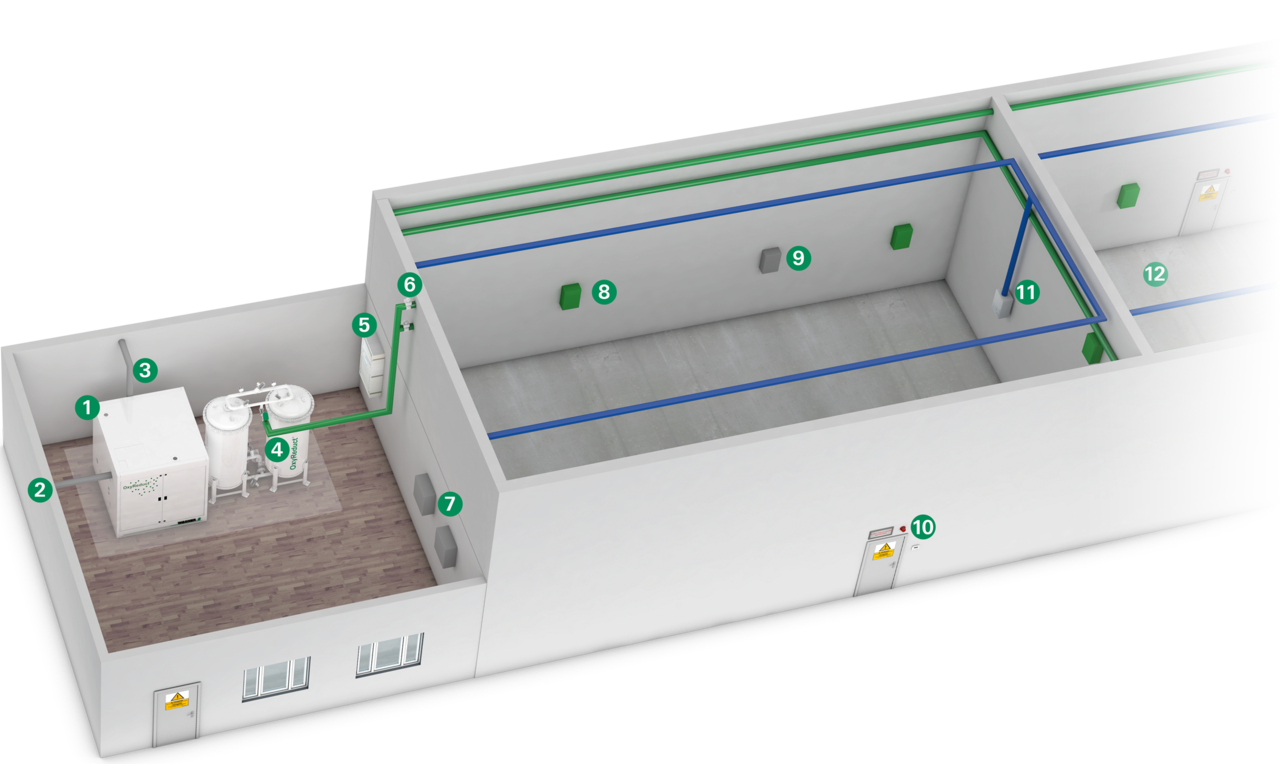Active fire prevention for large-volume rooms
The OxyReduct® VPSA builds upon the well-known PSA technique of active, energy-efficient fire prevention. It is designed especially for use in protecting large rooms, as it can generate the large quantities of nitrogen they require in an environmentally friendly way. No wonder, then, that this fire protection system has become a standard solution in the warehousing industry.
OxyReduct® VPSA (Vacuum Pressure Swing Adsorption) generates the nitrogen required to reduce oxygen levels directly on site from the ambient air. It does this by separating gas mixtures using a physical method involving activated carbon. Compression and negative pressure are used to divide the ambient air into nitrogen and oxygen directly on site. Yet process pressure remains very low, so very little energy is required. The procedure can save up to 80% in operating and energy costs compared to conventional oxygen reduction systems.
- VPSA stands for Vacuum Pressure Swing Adsorption
- Adsorption process using Carbon Molecular Sieve (CMS)
- Working pressure: around 1-2 bar (overpressure)
Advantages
- The system’s modular design provides flexibility, and can even can be scaled for different performance classes.
- It also allows several systems to be linked together, a major advantage for large storage areas due to the large quantities of nitrogen that can be produced.
- The continuous stream of nitrogen makes the system suitable for protected areas with a high rate of air exchange.
- OxyReduct® VPSA is an environmentally friendly technology suitable for continuous operation; it is also especially maintenance-friendly, since all of its components are easily accessible.
- The system is VdS-approved, a testament to the high quality standards it meets.
1 OxyReduct® generator (VPSA technology): Extracts nitrogen from room air on location and uses it to reduce oxygen concentration levels within the protected area
2 Supply air (room air)
3 Exhaust air (O2)
4 N2 infeed pipe: Feeds nitrogen into the protected area, where it is generally distributed via an air recirculation system
5 OxyControl central controller: Manages processes for the entire OxyReduct® system
6 Selector valve: Opens/closes nitrogen supply valves for specific areas
7 Area regulator 1 and 2: Work together with OxyControl to monitor oxygen content and adjust it to within defined protection levels
8 O2-Sensor OXY.SENS®: Continuously measures oxygen concentration levels within the protected area
9 OXY.SENS® SIL2 sensor: Provides supplementary oxygen concentration measurements and activates sector valve closure when they drop below 12% vol.
10 Area display: Shows the current oxygen concentration levels within any given protected area
11 TITANUS® air sampling smoke detection system: Active fire detection using air sampling to identify smoke early on
12 Needs-appropriate protection concepts: Multiple protection schemes and oxygen concentration levels may be employed in order to keep protected areas accessible, e.g., unrestricted access for personnel or restricted access for maintenance purposes
